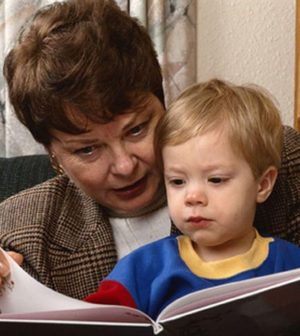- New School Lunch Rules Target Added Sugars, Salt
- Dairy Cows Moved Across State Lines Must Now Be Tested for Bird Flu
- TikTok Riddled With Misleading Info on Health: Study
- Emulsifier Chemicals Are Everywhere in Foods. Could They Raise Diabetes Risk?
- Opioids During Pregnancy May Not Raise Psychiatric Risks for Offspring
- Could Heartburn Meds Raise Your Migraine Risk?
- Drug, Alcohol Abuse Goes Untreated in Many Ex-Prisoners
- Watchdog Group Says U.S. Food Recalls Rose Again Last Year
- Genes Could Mix With Pesticide Exposure to Raise Parkinson’s Risk
- Breast Cancer Survivors Face Higher Odds for Second Cancer
Stories Get Listeners’ Hearts in Sync

The heart rates of people sync up when listening to a story, a new study finds.
“There’s a lot of literature demonstrating that people synchronize their physiology with each other. But the premise is that somehow you’re interacting and physically present [in] the same place,” said co-author Lucas Parra, a professor of biomedical engineering at City College of New York.
“What we have found is that the phenomenon is much broader, and that simply following a story and processing stimulus will cause similar fluctuations in people’s heart rates. It’s the cognitive function that drives your heart rate up or down,” Parra explained.
For the study, the researchers conducted four experiments. In the first, healthy volunteers listened to a reading of Jules Verne’s “Twenty Thousand Leagues Under the Sea.” As they listened, heart rates changed based on what was happening in the story. Most participants had increases and decreases in heart rate at the same points in the story, the investigators found.
In the second experiment, participants watched instructional videos. This experiment confirmed that emotional engagement in a story was not playing a part. The first time they watched, participants’ heart rates showed similar fluctuations. The second time they counted backward in their heads as they watched — and their lack of attention led to less synchronization in heart rates. The conclusion: Attention is important.
In the third experiment, participants listened to children’s stories, some while attentive and others while distracted. They were then asked to recall facts from the tales. Fluctuations in heart rates were predictive of how well they did at answering questions about the story — more synchronization predicted better test scores. This indicated that changes in heart rate resulted from conscious processing of the story.
The fourth experiment was like the first, but it included both healthy participants and patients with disorders of consciousness, such as those in comas or persistent vegetative states. The patients had lower rates of heart synchronization than other participants. Six months later, some of the patients with higher synchronization had regained some consciousness, the researchers noted.
“What’s important is that the listener is paying attention to the actions in the story,” said researcher Dr. Jacobo Sitt of Paris Brain Institute and INSERM. “It’s not about emotions, but about being engaged and attentive, and thinking about what will happen next. Your heart responds to those signals from the brain.”
The findings were published Sept. 14 in the journal Cell Reports.
While the study is still very preliminary, Sitt said it could be an easy test to measure brain function.
Parra said neuroscience is increasingly viewing the brain as part of an “actual anatomical, physical body.”
“This research is a step in the direction of looking at the brain-body connection more broadly, in terms of how the brain affects the body,” he added in a journal news release.
More information
Stanford University has more about consciousness.
SOURCE: Cell Reports, news release, Sept. 14, 2021
Source: HealthDay
Copyright © 2024 HealthDay. All rights reserved.










